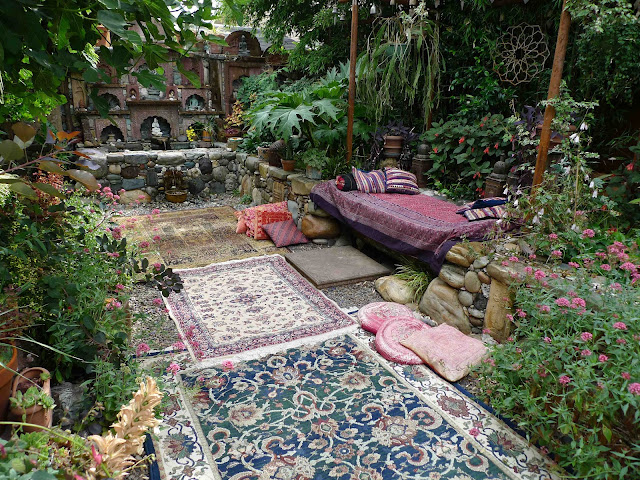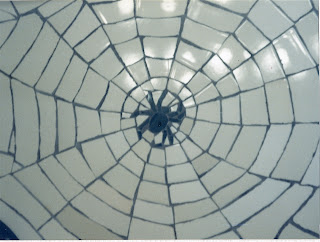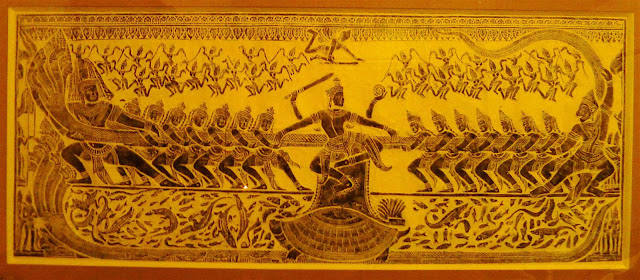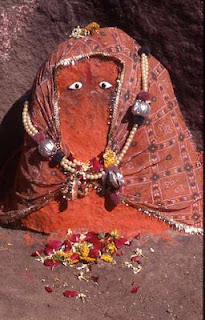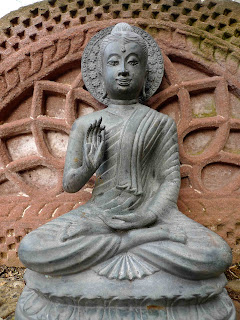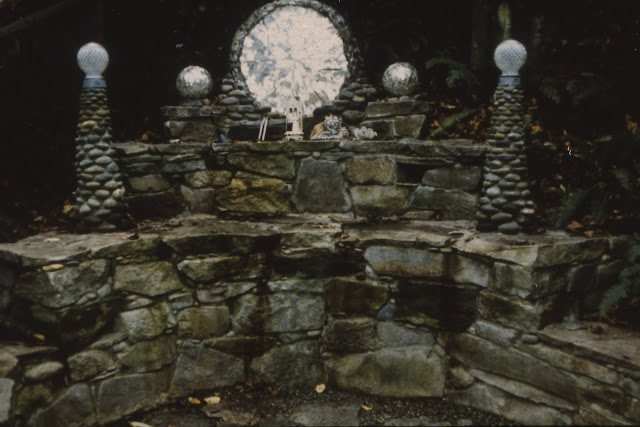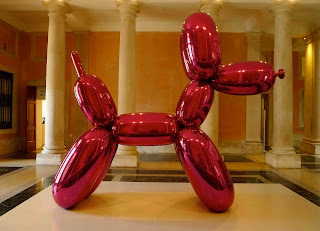![]() |
| The Grand Canal at sunset |
Travel is the stuff of dreams manifested in to reality. When I was a child watching the old game show 'Lets Make a Deal' on television, for me, the greatest prize one could possibly win was a week in Miami at the Fontainebleau Hotel, which seemed like a dream come true compared to winning a new washer and dryer or a donkey cart. I was destined to become a world traveler.
![]() |
| Lets Make a Deal, with Monte Hall.....Door number 1! |
I have since made it my goal in life to close my business and travel every winter to places that might have been mere fantasies before I realized them. This year I flew to Rome on frequent flier miles, stopping in Paris for a week on the way. I had never been to Paris and I am definitely going back to that magnificent city for more if the Gods allow. I house sat for friends in Rome for 2 1/2 weeks and then was coaxed north to celebrate the New Year with a friend who lives in Venice. I had always thought it would be too cold in the winter to visit this fair city, but I figured I could survive a week ducking in to churches and palaces to escape the chill and at least get a taste of this legendary city.
![]() |
| Winter's blue light on the Canal San Marco |
I found an apartment online in the Cannaregio neighborhood, which is a quiet area away from the tourist mecca that Venice has become, and ended up postponing my departure 3 times and staying a month.
![]() |
| A fresco dining in Cannaregio |
Venice is understandably famous as it is one of the most beautiful cities in the world. And perhaps I was lucky, because the weather for the most part was bearable, with lots of sunny days. Once the New Year holidays were finished, the city was surprisingly quiet and intimate. Traveling in the winter has the advantage of beautiful and mysterious light and fewer tourists. And on a foggy day Venice can be absolutely surreal.
![]() |
| Portico of the Palazzo Ducale on a foggy evening |
![]() |
| Night fog in the Giardini Publico |
Venice was built on 117 small islands and has something like 150 canals. The islands are connected by 410 bridges, the most famous being the Ponte di Rialto, which crosses the narrowest point in the Grand Canal in the oldest part of the city.
![]() |
| Ponte di Rialto |
One of the things that makes Venice truly unique is that there are no cars. This is the largest pedestrian area in all of Europe and is only surpassed in size by the Medinas of large cities in North Africa, such as Fez in Morocco. Cars are the bane of the urban landscape. Rome is beautiful but its lovely lanes and piazzas are often filled with cars, which is a visually degrading thing. The air pollution turns everything brown or black, and the noise is relentless. But Venice shimmers quietly in its reflection on the water. A gloss black gondola glides by silently with its entranced passengers nestled in red velvet upholstered seats between gilded finials. The elegance of living on water seems to have been transmitted in to the very embellishment of the city. Beauty is paramount here.
![]() |
| Gondolas at Ponte dei Sospiri |
![]() |
| Gondolas, Zaccaria |
Venice was originally settled in the fourth century AD by refugees from the mainland escaping the raids of invaders from the north and east. They built houses on wooden pilings on the marshy sand bars of the lagoon and developed a thriving economy in the production of salt. As the city grew, so did its influence throughout the Adriatic region.
![]() |
| A marshy undeveloped canal in Torcello give an indication of what the islands looked like before being built upon |
In it's heyday, Venezia was a maritime powerhouse, a cosmopolitan trading center with a diverse population, each with its own neighborhood. Artisanal riches from the furthest known reaches of the globe poured in to the city. Venice was also a major manufacturer of fine goods, textiles, glass, and boats. By the mid 15th Century, the Venetian fleet had over 3,000 merchant ships, which were rowed by oarsmen. Oarsmen were either drafted from the general public, or indentured as a means of labor to pay off debts.
![]() |
| The Arsenale, where many of Venice's ships were built |
The city's prestige increased when the remains of Saint Mark the Evangelist were stolen from Alexandria and placed in the new basilica. Saint Mark became the patron saint of the city, who's symbol is the winged lion. The Piazza San Marco and the adjacent Basilica di San Marco are the best known landmarks in the city today. When Napoleon overtook Venice he called Piazza San Marco "the finest drawing room in Europe".
![]() |
| Piazza San Marco, the Campanile, and Basilica di San Marco |
It opens on to the wide Canal de San Marco at Piazetta di San Marco, bordered by the Palazzo Ducale and the Libreria Nazionale Marciana. The waterfront is framed by two high columns with a statue of the Lion of San Marco on the left and Sant' Teodore on the right. The beauty of Venice and its watery setting were a favorite subject of the painters Turner and Guardi. An elevator takes visitors today to the top of the bell tower in the Campanile, providing a spectacular view of the surrounding islands. I was fortunate enough to go up on a quiet afternoon just before closing and was the only person up there amongst the bells. There is another view point in the Campanile at Isole di San Giorgio Maggiore that is worth visiting as well for its vantage point taking in the whole of Venice from a distance.
![]() |
| Piazzeta di San Marco, with the Palazzo Ducale on the left and Isola di San Giorgio Maggiore in the distance |
![]() |
| Sunset over Venezia from the Campanile di San Marco |
In 1204, during the fourth Crusade to liberate the Holy Land from Muslim rule (a task never actually executed), the Venetians and their Francophile tenants sacked the city of Constantinople and brought a considerable quantity of valuable plunder back to the Venice, including four magnificent gilded bronze horses. These were placed on the balcony of the Basilica di San Marco. The originals now reside inside and fine replicas prance over the square. This influx of Byzantine treasure added considerable wealth to the city's coffers. It also hastened the fall of Constantinople to the Ottomans.
![]() |
| Replicas of the Constantinople Horses on the balcony of Basilica di San Marco |
![]() |
| The original gilded horses taken from the Hippodrome of Constaninople during the 4th Crusade |
The Basilica di San Marco is lavishly decorated with golden mosaics depicting various scenes from the Old and New Testaments of the Bible, as well as portraits of Apostles, Evangelists, and high ranking officials. It was originally built as a private place of worship for the Doge of Venice, who was the leader of a democratically elected senate. He resided in a magnificent palace, the Palazzo Ducale, which is adjacent to the Basilicia. The embellishment of the interior spaces of the Palazzo are spectacular.
![]() |
| Green and gold glass mosaics depicting scenes from Genesis in the Old Testament |
![]() |
| A mosaic of Christ with the Crown of Thorns in the Basilica di San Marco |
![]() |
| The grandiose Sala del Maggior Consiglio in the Palazzo Ducale |
![]() |
| The Venetian Gothic exterior of the Palazzo Ducale |
The Catholic Church plays an important role in Italian society and there is no shortage of magnificent religious edifices in Venice. It is interesting to note that during the Inquisition, Venice did not carry out any executions for heresy, perhaps because of its cosmopolitan population and economic ambition.
![]() |
| The Gothic altar of Chiesa di San Zaccaria with Giovanni Bellini's La vergine in Trono col Bambino |
The Gothic style of architecture found its greatest expression in the Franciscan Chiesa di Santa Maria Gloriosa dei Frari, one of my favorite churches in the city.
![]() |
| The main entrance to Chiesa di Santa Maria Gloriosa dei Frari |
The lofty interior is decorated in a variety of dramatic monuments to illustrious citizens, including the artist Titian. The heart of the sculptor Canova is interred in a beautiful pyramid that he designed for Titian but it was dedicated to Canova after his death.
![]() |
| Pyramidal monument dedicated to the sculptor Canova and the extraordinary monument to Doge Giovanne Pesaro |
Like most Italian cities Venezia is rich in Baroque churches. The Chiesa di San Giorgio Maggiore was designed by the Renaissance master architect Andrea Palladio to replace a Benedictine church that was destroyed by an earthquake. It sits picturesquely on an island close to the Giudecca that can be seen from San Marco. The view from the Campanile bell tower is breathtaking.
![]() |
| Chiesa di Santa Giorgio Maggiore |
![]() |
| A maze seen from the Campanile di San Giorgio Maggiore |
Some churches were built to beseech the Virgin Mary to deliver the population from the miseries of the plague. In 1630 approximately one third of the population of the city succumbed to the disease, which may have ultimately brought about the demise of the Republic. The Chiesa di Santa Maria della Salute was built in hopes that divine intervention would save the people. A landing was built so that the Doge could make a ceremonious annual procession to pay homage to the Virgin there. The church is a significant landmark on the Grand Canal, unusual for its octagonal shape, designed by Baldessare Longhena when he was only 26 years old.
![]() |
| Chiesa di Santa Maria della Salute in Dorsaduro |
I visited as many churches as I could gain access to. Venice was a center for the arts and a great many masters embellished the interiors of religious institutions. Tiziano Vecelli, known as Titian was perhaps the most highly regarded Venetian artist.
![]() |
| The Assumption, by Titian, in Chiesa di Santa Maria Gloriosa dei Frari |
If you aren't playing a rating game it is hard to beat the prolific works of Jacopo Tintoretto, who's over the top decoration of the Scoula Grande di San Rocco boggles the mind.
![]() |
| The Scoula Grande di San Rocco is covered in paintings by Jacopo Tintoretto |
Paolo Veronese's work is breathtaking to behold, in its richness of color and softness of rendering. His patron church of San Sebastiano is covered in magnificent works by the artist.
![]() |
| Chiesa di San Sebastiano features masterpieces by Paolo Veronese |
My favorite is perhaps the painter Vittore Carpaccio, who studied under the master Gentile Bellini.
![]() |
| A detail of a painting by the artist Vittoreo Carpaccio in the Gallerie dell'Accademia |
Bellini's work is delicate and perfect in its rendering. It would require weeks to cover all of the great artists who blessed Venice with their masterful skill, so I will give it a rest.
![]() |
| Giovanni Bellini |
Venice was also a leading center for music and literature. With the invention of the printing press, the city became one of the first in Europe to publish manuscripts and sheet music. This attracted great writers such as the amorous gambler Cassanova, and musicians, including the composer Antonio Vivaldi. The world's first opera house opened here in 1637.
![]() |
| A chamber ensemble practices in a church. |
As the Venetian empire expanded to include the islands of Cypress and Crete, a wealth of goods flooded in and out of the city from Arab and Byzantine sources. Venice was the richest and most socially refined city in Europe for some time, and grand palazzos were built along the grand canal in an almost competitive manner.
![]() |
| Palazzos large and small on the Grand Canal |
The style of 14th Century Venetian Gothic architecture used a blending of the Gothic lancet arch combined with Byzantine and Moorish motifs to create a fanciful and distinctive inflected frame for doors and windows. Quatrefoil shapes set between the arches give a lacy elegant line to balconies like those found on the Ca d'Or. The delicacy of the architecture was in part to reduce the weight of the buildings, as they are built entirely on tightly packed wooden pilings buried in the mud and sand of the islands. Alder was the most common tree used as it is rot resistant when submerged in water. Entire regions were stripped of their trees in order to create the piling base for building foundations in the rapidly growing city.
![]() |
| The Ca' d'Or |
![]() |
| The ornate Venetian Gothic Porta della Carta, Palazzo Ducale |
While the Renaissance made substantial changes to architectural style in Italy, Venice continued to favor the Gothic form in addition to the resurgence of the classical round arch.
![]() |
| The Renaissance style 16th Century Palazzo Barbarigo was decorated with Murano glass mosaic in 1886 |
Palaces built in the Baroque style, such as the magnificent Ca' Rezzonico abandoned the Gothic form but retained the lightness of multiple arches and numerous windows.
![]() |
| The Baroque interior and large windows in Ca'Rezzonico |
![]() |
| The spiral staircase of the 15th Century Palazzo Contarini del Bovolo |
![]() |
| One of my favorite buildings for its aquatic carvings is the Borsa |
A boat trip down the Grand Canal reveals a diverse mix of architectural styles, many of them clearly intending to display the wealth and taste of the families who built them. A few even have gardens. I had the pleasure of meeting the delightful author Tudy Sammartini, who wrote 'The Secret Gardens of Venice' and a number of other books, and has been responsible for the refurbishment of various gardens throughout the city.
![]() |
| Add caption |
Because the palazzos were approached from the water the principal facades face the canals rather than streets. Like so many visitors to Venice I began to fantasize having a palazzo of my own, although I tended to be most attracted to ones of more modest size like this charming place with a lovely little garden fronting the canal.
![]() |
| Shopping for a Palazzo |
![]() |
| Even the more humble abodes of Venice have great character, and wonderful chimneys |
Venice has a great many wonderful museums housing its art and cultural treasures. The somewhat forlorn but magnificent Gallerie dell'Accademia in Dorsoduro is the most important repository for the works of great Venetian masters.
![]() |
| A grand gallery featuring works by Titian and Tintoretto |
The Museo Correr in the vast Ala Napoleonica, a palace built by the Emperor Napoleon after he captured the city in 1797 houses an eclectic collection of paintings and the Museo Archeologico, with ancient works. The most impressive room in the complex is the Renaissance Libraria Nacionale Marciana, which was built to house an important collection of manuscripts donated to the republic by Cardinal Giovanni Bessarioni. The collection of ancient Greek and Latin texts is one of the most significant in the world. The library's over the top ceiling is a classic example of Venetian ornamentation.
![]() |
| Liberia Nazionale Marciana |
The Ca' Pesaro contains the Gallerie d'Arte Moderna, with a mixed bag collection of 20th Century artists including Klimpt and Chagall. The most impressive works for me were the sculptures of Adolfo Wildt.
![]() |
| The entry courtyard to Ca'Pesaro |
![]() |
| Sculpture of a nude by Adolfo Wildt |
![]() |
| Bust of a child by Adolfo Wildt |
On the top floor is the Museo d'Arte Orientale, an amazing collection of thousands of objects brought back to Venice by Prince Henry II of Borbone, who traveled through east Asia from 1887-89. This museum is often overlooked as the works are exotic but it is fascinating and beautifully displayed.
![]() |
| Edo period horse bridles in the Museo d'Arte Orientale |
Another interesting museum for its eccentric painting collection that is often overlooked is the Museo Diocesano di Arte Sacra and the Chiostro di San Apollonia. The cloisters are simple and elegant, but what really caught my eye was a painting of the Last Supper where a dog is being served up for dinner. I was a Guinea Pig on the table once in Peru, but I've never seen a dog.
![]() |
| Ultima Cena (the Last Supper) by Giovan Battista Pittoni |
The Museo di Storia Naturale has recently reopened after extensive renovations and is a masterpiece of presentation. The rooms and displays look almost as if they were designed by a Hermes window decorator. The arrangements are artistic as well as educational. I loved this museum, and I was the only one there apart from a group of school children.
![]() |
| African animals artfully displayed in the Museo di Storia Naturale |
![]() |
| Albino deer, two headed calves and complimentary colors in nature |
![]() |
| Projections of early life forms in the Museo di Storia Natural |
Contemporary Art is well represented in Venezia, particularly at the Peggy Guggenheim Collection. Her biography is worth reading at http://www.guggenheim-venice.it/inglese/museum/peggy.html
She moved to Venice and bought the Palazzo Venier de Leoni on the Grand Canal in the Dorsoduro district, which she eventually opened to the public to exhibit some of the finest works in her vast collection of art from the first half of the 20th Century. Peggy had excellent taste and the museum is a visual feast of works by the pioneers of modern art.
![]() |
| Palazzo Venier Leone, home to the Peggy Guggenheim Collection |
![]() |
| Contemplating Jackson Pollock |
![]() |
| Gino Severini, Sea=Dancer |
The Venice Bienniale is a major exhibition of art, architecture and music that happens every other year. Three world class spaces host exhibitions. The Palazzo Grassi is run by the Francois Pinault Foundation and features a collection of works indicative of the strange path that much of modern art has taken, entering the realm of intellectual existentialism. Art is no longer trying to be aesthetically pleasing or meaningful, but rather it exists just because it was created. Frequently it can be horrific or shocking or baffling, and usually somewhat confusing. The affect it has on the brain is interesting but not always satisfying. At its best it has a sense of humor, but I am old fashioned and I like beauty, so if the intension is to shock with ugliness I usually don't derive any satisfaction from the experience.
![]() |
| Jeff Koons iconic pink balloon poodle in the Palazzo Grassi |
At the exhibition space at Punta della Dogana I actually felt sorry for the docents that had to watch over rooms displaying art that bordered on irritating. One video installation was so obnoxious that it could easily drive a person insane having to listen the the ceaseless jabber pouring from the speakers. The Venetian artist Gigi Bon told me that there used to be a famous lantern on the Punta that young lovers would visit for their first kiss. The lantern disappeared during the remodeling of the building in to a museum and was replaced by an interesting pure white sculpture of a naked boy holding a frog by the leg in his extended arm. While the work is interesting in this dramatic location, it requires that there be a guard 24 hours a day to make sure that nobody touches it. But she told me the real reason is that angry Venetians longing for their romantic landmark would like very much to toss the boy in to the Grand Canal.
![]() |
| Boy with Frog, by Charles Ray, on the Punta del Dogana |
The museum here is a beautiful space with world class lighting but the majority of the works left me feeling a little queazy. One room has cheap patio furniture on squares of green astroturf, some kind of Marcel Duchamp statement that anything can be art without the profound simplicity that Duchamp's objects illicit. The docent in that room was for me the most interesting part of the installation, which included cannons. He looked like he was intended to be part of the work.
![]() |
| Cannons, a snake, palms in plastic pots, and a gun on astroturf carpets. The man is alive. |
The Palazzo Fortuny is a wonderful museum housed in a magnificent Gothic palace that was owned by the textile and theater magnate Mariano Fortuny. The walls are draped with sumptuous cut velvet brocades. At the time of my visit the museum was hosting an exhibition relating to the operas of Richard Wagner. Fortuny staged a number of theatrical productions and the museum displayed several paintings, sculptures, and set designs relating to Wagnerian operas. One room had beautiful scrim sets painted by Mariano Fortuny for the opera Parsifal.
![]() |
| A Fortuny scenery painting for the opera Parsifal |
The Fortuny factory on the island of Judaica still produces beautiful fabrics, accessories, and light fixtures which are sold in their Venetia Studium shops throughout Venice. The company was founded in 1921 by Mariano Fortuny, who also worked in theatrical design, book binding, and painting. If I was rich I would be coming home laden with beautiful Fortuny creations.
![]() |
| Venetia Studium shop in San Marco |
Fashion in Venice has always been flamboyant and stylish. In the 14th Century, men wore pants with two different colors of stockings as an indicator of which societal club they belonged to. These were called 'Companie della Calza', literally a 'Trousers Club'. Over these they wore fanciful pleated jackets, robes, and hats to a degree of show usually reserved for women, with rich silk velvet brocades and lace from Burano.
![]() |
| Add caption |
The festival of Carnevale became a vehicle to express the decadence of Venetian society. Masks were worn as a way to disguise one's identity, enabling promiscuity between different levels of society. During times of plague, which ravaged the city, masks could be used to hide lesions caused by the disease. The characteristic long beaked mask commonly seen today were worn by 'Medico della Peste' or 'Plague Doctors'. These came about as a way to counter the stench of death by packing the beak with Eucalyptus leaves or scented rags. There were worn with a long black cape and matching hat, and a cane was used to avoid physical contact with the diseased.
![]() |
| Masks are produced in great quantity today. The long beaked Plague Doctor masks can be seen on the lower left |
![]() |
| Carnevale Masks |
Bodies during plagues were frequently left to rot in 'dung piles' in the city's piazzas. When Napoleon arrived he took it upon himself to have the piles removed to the island of San Michele, which to this day is the municipal cemetery.
![]() |
| Isola San Michele, Venice's island cemetery |
Nostalgia for sumptuous dress was revived in the present day Carnevale, where opulent garments based on historical styles are prominent. It had waned in popularity in the 18th Century and was only reenacted in the 1979 by the Italian government as way of promoting Venetian culture to the tourist industry. I was only in the city for the beginning of the festival, which I found to be vain rather than lively, with lots of justifiable posing under the burden of such extravagant costuming and heavy wigs. I was told by Venetians that Carnevale is most popular with French tourists and that many locals leave the city to avoid the huge crowds of people who descend on the city during the second week of the festival.
![]() |
| Period costumes of extravagant opulence are a favorite during Carnevale |
![]() |
| The burden and weight of vanity invokes a serious demeanor |
I have participated in three Carnevales in Brasil, where it is tropical and warm. It is an entirely different affair, with the vibrancy of African dance and music, and a great deal of nudity. I wanted very much to participate in the festivities here so I decorated masks with colored pencils I brought to brighten the drawings in my journal.
![]() |
| Masks I decorated in a lighter vein |
The opening event was a lovely event on the Fondamente in Cannaregio very near to the little house that I rented. It was presented by a French performing arts organization called Ilotope. There were beautiful and surrealistic boats including a woman in a large red dress under which a person turned a wheel that propelled the float...lovely.
![]() |
| A performance by Iliope in on the Fondamente Cannaregio |
The next day I was lucky to watch from the Ponte di Rialto, a regatta of decorated boats being rowed by people in costume. After that I fled the city on a cold rainy day. Venice had gone full circle for me and it was time to go.
![]() |
| A regatta of colorful boats on the Grand Canal at the beginning of Carnevale |
There are wonderful islands surrounding Venice that are well worth visiting. Visible from Cannaregio and the Fondamente Nuovo is the island of San Michele, which where the city's cemetery is located. Igor Stravinski and his wife Vera are buried there in a humble grave amongst the masses.
![]() |
| Cimitero di San Michele |
Beyond Isola di San Michele is Murano, which has been famous for the production of fine glass since 1291, when all of the glass makers of Venice were forced to move there to reduce the risk of fires. Murano glass is famous throughout the world for the richness of its color and ingenuity of design. Magnificent chandeliers and volumes of kitche produced in the foundries fill shops all over Venice.
![]() |
| Murano has been a famous center for the production of fine glass for centuries |
![]() |
| Contemporary Glass vessels designed by the architect Carlo Scarpa |
![]() |
| A delicate and kinky Murano candelabra celebrating the excesses of Carnevale |
Further away is the island of Burano. Fishermen seem to be attracted to bright colors, perhaps because of the monochromatic days at sea. Lacemaking became an important industry in the 16th Century.
![]() |
| The fishing village of Burano is known for its colorful houses and the tradition of lace making |
![]() |
| Lace makers in Burano |
Torcello is a short boat ride from Burano. Once a city of 20,000 inhabitants and was much more powerful than Venice. It was a major producer of salt and had strong connections with the Byzantine capitol of Constantinople after the fall of the Roman Empire. The city went in to decline as the lagoon around the island became a swamp and the city was plagued by malaria. Torcello was plundered for building materials as Venice grew, and all that remains are a few buildings, including the Basilica di Santa Maria Assunta, which contains magnificent Byzantine mosaics. It makes a peaceful trip from the tourist masses of Venice.
![]() |
| Basilica di Santa Maria Assunta, Torcello |
![]() |
| Remnants of the ancient city of Torcello |
Lido di Venezia is a barrier island known for its long sandy beaches. I made a trip there one day to see the interesting villas and quiet canals, and to walk the long sandy beach, which is covered in shells in the winter and tourists in summer. I left with a pocket full of shells, and could mosaic a significant grotto if I lived here. Lido was known for its brothels in the early 20th Century. Hmmmmm. Now it has cars, something of a shock when arriving from Venice.
![]() |
| The shell covered beach of Lido di Venezia |
And so ends our tour. There is so much more than I could possibly describe that makes this extraordinay island archipelago the precious jewel that it is. It is hard not to be enchanted by Venice. If you have ever been there you know what I am saying. I look forward to returning, as it seemed impossible to leave in the first place.
Thanks for reading, Jeffrey
![]() |
| An abandoned garden in Castello |










































































































